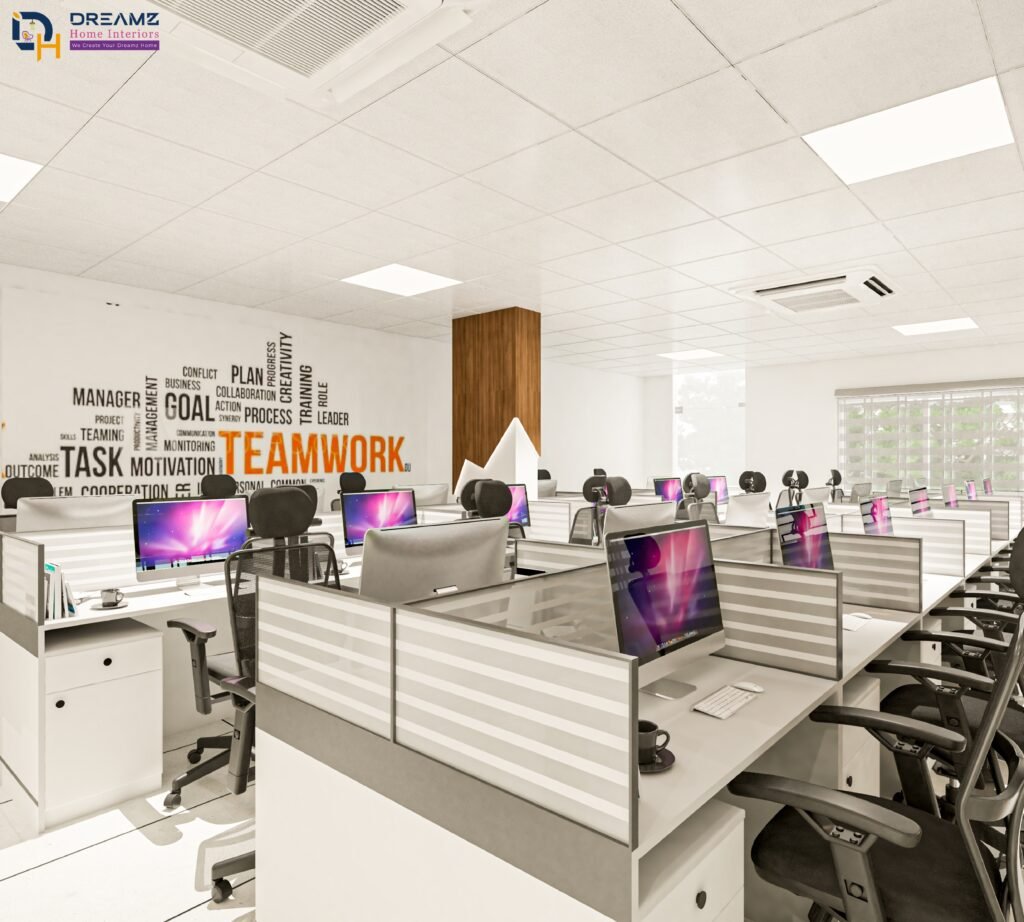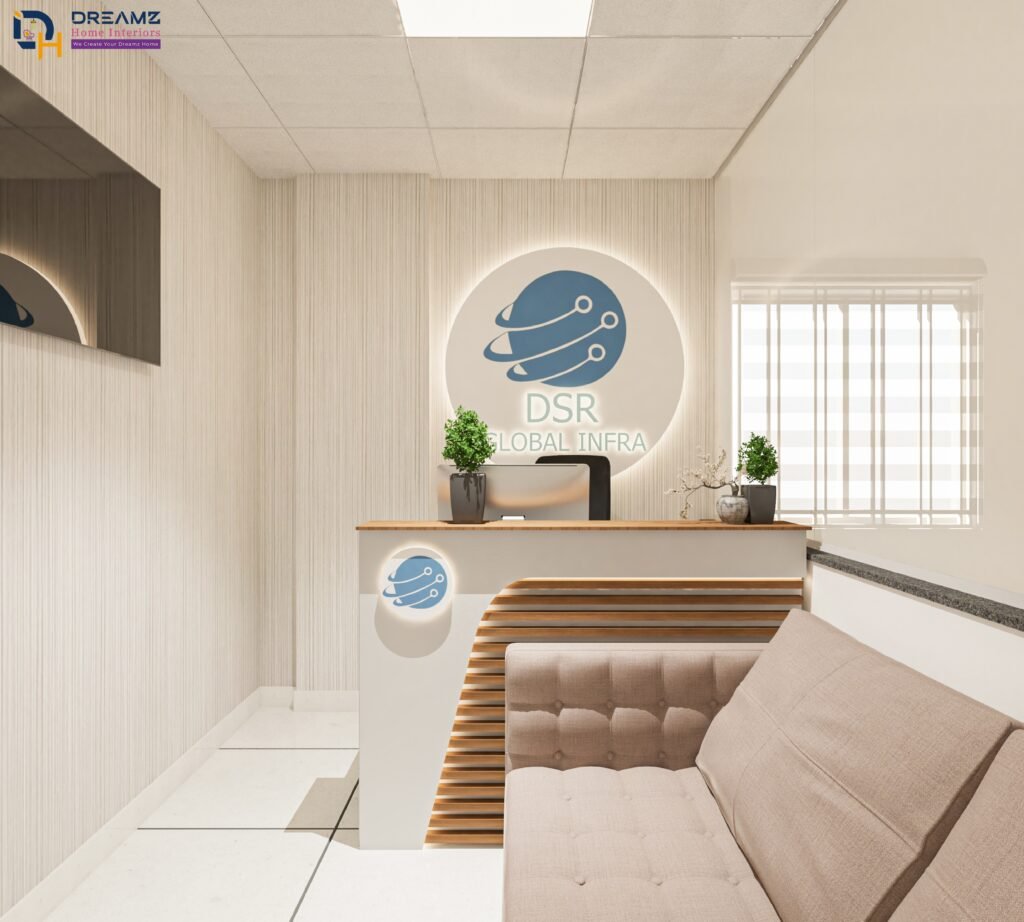Transforming Office Interiors in Bangalore with Dreamz Home Interior
Bangalore, known as the Silicon Valley of India, is a bustling hub for IT companies, startups, and multinational corporations. In this dynamic environment, creating a productive and aesthetically pleasing office space is crucial for business success. Dreamz Home Interior, a leading name in interior design, specializes in transforming office interiors to meet the unique needs of businesses in Bangalore. In this blog, we will explore various aspects of designing modern office interiors that foster creativity, productivity, and employee well-being.
1. Understanding Office Space Requirements
The first step in designing an office interior is understanding the specific requirements of the business. This includes:
Nature of Work: The type of work being performed, such as collaborative projects, individual tasks, or client interactions.
Employee Count: The number of employees and their roles to ensure adequate workspace and facilities.
Brand Identity: Reflecting the company’s values, culture, and branding through the design.
Future Growth: Planning for potential expansion and scalability.
2. Layout and Space Planning
Efficient space planning is essential for creating a functional office. Here are key considerations:
Open vs. Closed Layouts: Open layouts encourage collaboration and communication, while closed layouts provide privacy and focus. A combination of both can be ideal.
Zoning: Designate specific zones for different activities, such as workstations, meeting rooms, break areas, and reception.
Flexibility: Incorporate modular furniture and movable partitions to adapt the space for different needs and activities.

3. Workstations and Furniture
Choosing the right furniture is crucial for comfort and productivity:
Ergonomic Furniture: Invest in ergonomic chairs, desks, and accessories to promote good posture and reduce the risk of strain or injury.
Adjustable Desks: Height-adjustable desks allow employees to switch between sitting and standing, promoting better health and energy levels.
Collaborative Spaces: Create areas with comfortable seating, whiteboards, and collaborative tools to encourage teamwork and brainstorming.
4. Lighting Solutions
Proper lighting is essential for a productive work environment:

Natural Light: Maximize natural light by using large windows, glass partitions, and open layouts. Natural light has been shown to improve mood and productivity.
Artificial Lighting: Use a combination of ambient, task, and accent lighting to create a well-lit workspace. LED lights are energy-efficient and provide consistent lighting.
Adjustable Lighting: Provide adjustable lighting options at individual workstations to cater to personal preferences and tasks.
5. Color Scheme and Branding
The color scheme plays a significant role in setting the tone of the office:
Brand Colors: Incorporate the company’s brand colors into the design to reinforce brand identity and create a cohesive look.
Psychology of Colors: Use colors that enhance productivity and well-being. For example, blue promotes calmness and focus, while green is refreshing and reduces eye strain.
Accent Walls: Create accent walls with bold colors, artwork, or company logos to add visual interest and personality.
6. Meeting Rooms and Conference Areas
Meeting rooms are vital for collaboration and client interactions:
Design and Layout: Design meeting rooms of various sizes to accommodate different types of meetings. Ensure they are equipped with necessary technology, such as projectors, screens, and video conferencing tools.
Furniture: Choose comfortable seating and large tables for longer meetings. Incorporate writable surfaces like whiteboards or glass walls for brainstorming sessions.
Acoustics: Use soundproofing materials to minimize noise and distractions, ensuring a quiet and focused environment.
7. Break Areas and Wellness Spaces
Creating spaces for relaxation and wellness is essential for employee satisfaction:
Break Areas: Design inviting break areas with comfortable seating, coffee machines, and recreational activities like foosball or board games. These areas encourage socialization and relaxation.
Wellness Rooms: Incorporate wellness rooms for activities like yoga, meditation, or quiet reflection. These spaces help reduce stress and promote mental well-being.
Cafeteria: A well-designed cafeteria with ample seating, healthy food options, and pleasant decor can enhance employee satisfaction and productivity.
8. Technology Integration
Integrating technology seamlessly into the office design enhances efficiency and productivity:
Smart Offices: Implement smart office solutions like automated lighting, climate control, and security systems for improved convenience and energy efficiency.
Connectivity: Ensure robust and reliable Wi-Fi coverage throughout the office. Provide ample charging stations and outlets for electronic devices.
Collaboration Tools: Use digital collaboration tools and software to facilitate communication and project management among employees.
9. Storage Solutions
Effective storage solutions keep the office organized and clutter-free:

Built-in Storage: Incorporate built-in cabinets, shelves, and storage units to maximize space and keep the office tidy.
Personal Storage: Provide personal storage options like lockers or drawers at workstations for employees to store their belongings.
Document Management: Use digital document management systems to reduce paper clutter and streamline processes.
10. Sustainability and Green Design
Incorporating sustainable design practices is not only good for the environment but also enhances employee well-being:
Eco-friendly Materials: Use sustainable materials like recycled wood, low-VOC paints, and energy-efficient lighting.
Indoor Plants: Incorporate indoor plants to improve air quality and add a touch of nature to the office. Plants also have a calming effect and can boost productivity.
Energy Efficiency: Implement energy-efficient systems and practices, such as LED lighting, programmable thermostats, and natural ventilation, to reduce energy consumption.
11. Personalization and Employee Engagement
Personalizing the office space can boost employee morale and engagement:
Customization: Allow employees to personalize their workstations with photos, artwork, and personal items.
Feedback: Involve employees in the design process by seeking their feedback and preferences. This ensures the office meets their needs and promotes a sense of ownership.
Artwork and Decor: Use artwork, motivational quotes, and decor that reflect the company’s culture and values to create an inspiring work environment.
Conclusion
Designing an office interior that is functional, aesthetically pleasing, and reflective of the company’s culture requires careful planning and expertise. Dreamz Home Interior offers tailored solutions to create office spaces that enhance productivity, foster collaboration, and promote employee well-being. Whether you are setting up a new office or renovating an existing one, their team of skilled designers will ensure that your office interior is a true reflection of your business’s identity and goals. Trust Dreamz Home Interior to transform your office into a space where creativity and productivity thrive.
Also Read – Interior Designer Firms Near Me
